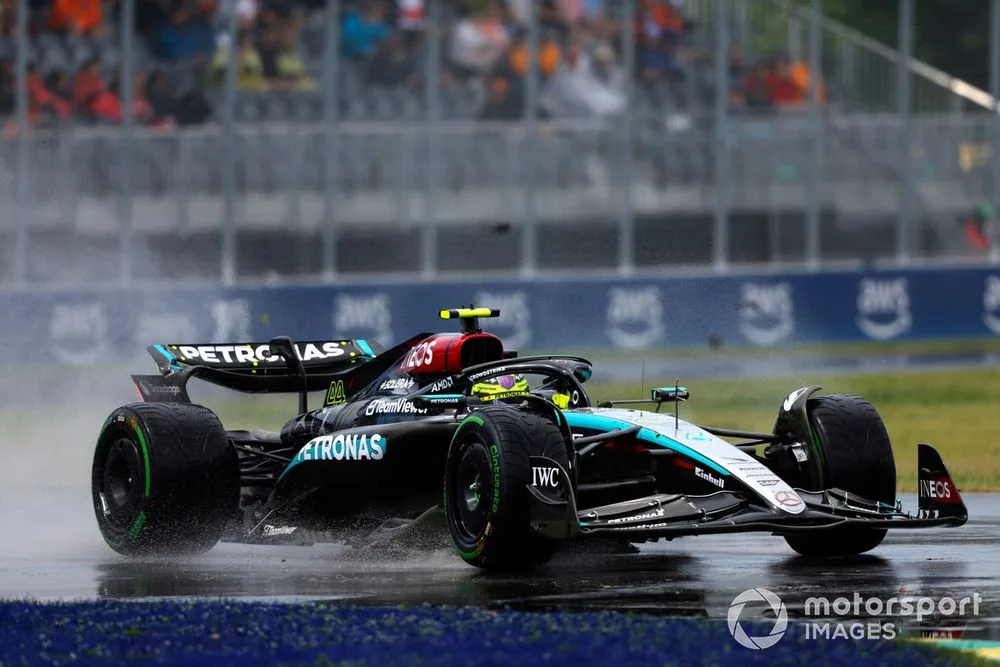The German manufacturer has been struggling with a car that does not perform consistently well across both high- and low-speed corners.
The team has found that if it improves its speed in one type of turn, then the other suffers. So, for example, a good set-up to eradicate low-speed understeer would result in the car enduring oversteer in the fast stuff.
Key to getting on top of this problem is ensuring that the car has a greater consistency of aero balance in different speed ranges.
As Mercedes technical director James Allison explains, there are ways to try to manage this mechanically – but that opens the potential for the car to behave in a way that is not good for driver confidence.
A much better way of doing it is in coming up with a wing that does not result in such an extreme shift of aero characteristics.
“You can do things with the mechanical balance which help you fight the inherent tendency to low-speed understeer, high-speed oversteer,” he said. “The more extreme you make that, the more tricky the car feels to drive.
“But if you sort of take away the aerodynamic unhappiness that that mechanical balance is fighting, then you can have a less extreme mechanical balance migration in a car that feels more consistent and predictable to the driver.”
Lewis Hamilton, Mercedes F1 W15
Photo by: Glenn Dunbar / Motorsport Images
Taking away that aerodynamic unhappiness has come through the creation of the new front wing, which works in a way not to shift the aero balance as far forward when the car is running at high speeds.
As Allison explained: “I think all these cars like being near the ground, which is why they are near the ground. The front wings on these cars are very big and they probably like being near the ground the most of all.
“That tends to make a car get more nervous as it goes faster, because predominantly and proportionately more [balance] is moving to the front axle than you might wish. And so, you’re fighting that with these rules.
“The more you find downforce near the ground, the worse that gets. Everyone in 2022 when these rules were first published weren’t as near to the ground as they are now.
“We weren’t fighting this inherent behaviour as much then as we are now. And this [wing] is just helpful with that.”
Flexi-wing battle
How Mercedes achieves its aim of a wing that doesn’t keep ramping up the downforce as it gains speed is a less clear matter – as it probably steps…
Click Here to Read the Full Original Article at Autosport.com – Formula 1 – Stories…

